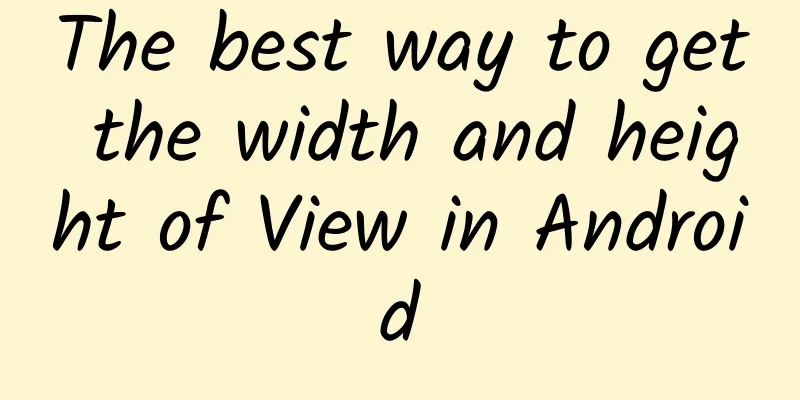The best way to get the width and height of View in Android

|
In Android, there are usually multiple ways to get the width and height of a View. Android's view layout and measurement are performed asynchronously. At some life cycle stages, the width and height of a control may not be determined. The following are several common methods for getting the width and height of a control:
Sample code:
Sample code:
Sample code: When trying to get the width and height of a control, you should consider the control's life cycle and layout process to ensure that you get the correct value at the right time. |
<<: Apple is also keeping up with the times on the front end! Did you know?
>>: iOS 18 hidden feature, supports T9 dialing!
Recommend
Did you know that glasses cloth is not used to clean glasses?
I believe that many friends who wear glasses do t...
As compact celestial bodies formed by the collapse of stars, their "collision" may reveal the ultimate mystery of the universe
Author: Duan Yuechu A neutron star is an extremel...
Observing the water flowing from the faucet has brought new breakthroughs in the study of turbulence and transitional flow!
The water that flows out of an ordinary faucet te...
Cai Zhongyang's mobile phone photography color adjustment system course, from a novice to a master of mobile phone photography
Cai Zhongyang's mobile phone photography colo...
How dirty is the water in the water dispenser?
One minute with the doctor, the postures are cons...
Why does Sony TV always dare to publicly beat its competitors? The truth is so straightforward
Sony is unique. Its brand temperament is closer t...
People always say that iPhone runs smoothly without any lag, but Android runs very laggy?
When buying a mobile phone, the most common advic...
National Vascular Health Day丨Has the "source" of cerebral infarction been found? It may save millions of lives!
Expert of this article: Chen Sijiao, Chief Physic...
Which Shanghai mini program development company is the best? Shanghai mini program development and production company
In 2017, WeChat launched a new product, mini-prog...
A successful H5 should hit the user's key points and achieve the operation purpose
Without discussing how to define “success”, can y...
Behind the plunge in Tesla’s stock price, is Musk planning a big game for shared cars?
Tesla, which has escaped the curse of low product...
iPhone 6 released today, said to have changed, scalpers are raising the price to make money
The seller showed the reporter an iPhone 6 protot...
I accept your true fragrance, the leapfrog flagship realme X2 Pro hands-on review
The situation in the mobile phone market is not g...
Wang Chong: Business model + team management + traffic breakthrough
Course Catalog: ├──Wang Chong 1.1.mp4 1.11G ├──Wa...
Terence Tao: Beginners should not use AI tools to perform expert-level tasks, and GPT is not very helpful for experts
In recent months, the famous mathematician Terenc...







![[Creative Cultivation Program] In a hundred years, will humans be unable to see a single star? Light pollution harms more than just astronomical observations](/upload/images/67f25b167f7e6.webp)

